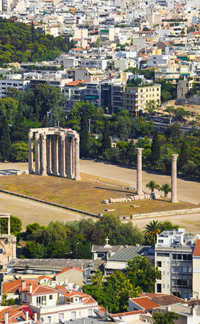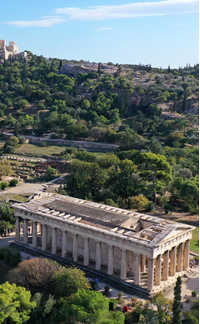Perched high above the bustling modern city of Athens, the Acropolis stands as a majestic reminder of ancient Greece’s grandeur. More than just a collection of ancient ruins, it is a powerful symbol of classical spirit, democratic ideals, and architectural mastery that has inspired generations for over 2,500 years.
A Hill of History
The word "Acropolis" comes from the Greek words "akron" (highest point) and "polis" (city), and few places live up to this name as completely as Athens’ iconic hilltop citadel. While archaeological evidence shows human presence on the hill as early as the Neolithic period, the Acropolis reached its cultural peak in the 5th century BCE during the Golden Age of Pericles.
Monuments That Made History
The most celebrated structure on the Acropolis is the Parthenon, a temple dedicated to Athena, the city’s patron goddess. Built between 447 and 432 BCE, it represents the pinnacle of Doric architecture and once housed a massive statue of Athena made of gold and ivory.
Nearby, the elegant Erechtheion catches the eye with its Porch of the Caryatids — columns sculpted in the form of graceful women. Each building on the Acropolis was crafted with careful attention to proportion, symmetry, and symbolism, setting a standard for Western architecture for centuries to come.
Other notable sites include the Propylaea, the grand entranceway, and the Temple of Athena Nike, a smaller yet exquisitely designed temple that once celebrated Athenian victories.
A Cultural Crossroads
Over the centuries, the Acropolis has been shaped and reshaped by various civilizations. From a center of worship in antiquity, it was later transformed into a Christian church, a Byzantine palace, a mosque during Ottoman rule, and even a gunpowder magazine. Despite wars, occupations, and natural decay, it has endured — often scarred, yet never broken.
A Modern-Day Pilgrimage
Today, the Acropolis is a UNESCO World Heritage Site and one of the most visited landmarks in Europe. Climbing the marble steps to its summit rewards visitors not just with sweeping views of Athens, but with a deeper connection to the roots of Western civilization.
The Acropolis Museum, located at the foot of the hill, provides essential context for the site’s history. Its glass walkways reveal ongoing excavations below, while its galleries house sculptures, friezes, and artifacts rescued from time and the elements.
Tips for Travelers
- Best Time to Visit: Early morning or late afternoon to avoid the heat and crowds.
- What to Bring: Comfortable shoes, water, sun protection, and a camera to capture the views.
- Don’t Miss: The Parthenon at sunset, when the marble glows with golden hues.
A Living Legacy
The Acropolis of Athens is more than a relic of the past — it is a living monument to human creativity, resilience, and aspiration. Whether you’re a history enthusiast, a lover of art, or a curious traveler, a visit to this ancient citadel promises an unforgettable journey through time.


















